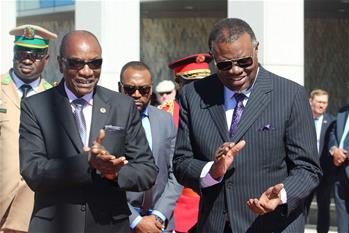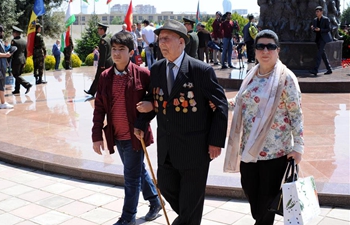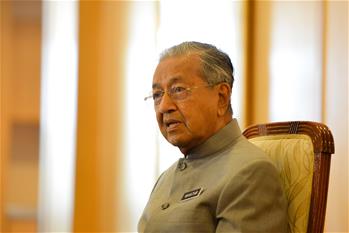by Farid Behbud
KABUL, May 10 (Xinhua) -- The Afghan currency has markedly lost its value against the U.S. dollar, affecting the daily life of people, especially during the Muslim holy month of Ramadan in the poverty-stricken country.
The local currency drop has badly hit people's routine life, and would further weaken the country's economy, if not controlled.
On Thursday, the afghani sank to 78.38/78.18 per U.S. dollar, the lowest point in more than 10 years. In January last year on the same day, it was 70.73/70.53, according to Afghanistan's central bank, Da Afghanistan Bank.
In 2011, the rate was 47.60/47.40.
The rate of the Afghan money has also been unstable in the past many years, and Da Afghanistan Bank has tried to keep the local currency stable by injecting millions of U.S. dollars to the market, but it failed to find a permanent solution to the problem.
However, in the past few years, the prices of goods, particularly of the primary foodstuffs, have not been as high as they are nowadays. Currently, citizens with low income said they can't pay for the skyrocketing prices.
A few weeks ago, a bag of 50 kg of flour was 1,300 afghani, but it has now jumped to 1,500 afghani, making it unaffordable for an ordinary civil servant who earns less than 10,000 afghani and has to pay a monthly house rent of at least 6,000 afghani, said a Kabul resident.
Daud Nejrabi, a Kabul citizen who works for the Afghan Ministry of Culture and Irrigation, blamed the related departments for failing to overcome the problem.
"When we ask the food dealers for why they were raising the prices, they reply that the rate of the dollar has risen and we also purchase the commodities from the wholesalers at high prices," Nejrabi told Xinhua on Thursday.
The central bank of Afghanistan which is the main policy-maker and responsible for the local currency's stability, said that the reason behind dollar rate hike was its rise in many regional and world countries and it was making efforts to lower the price.
Ordinary citizens who are being hurt by the price rise said the bank has done nothing effective in maintaining the stability of the local currency except directly intervening in the market and pumping millions of U.S. dollars to the currency exchange market to keep afghani stable.
"We have to pay 30 percent more for the price of what we need to buy, particularly during the holy month of Ramadan," said another Kabul citizen Suraya Raiszada who is the only bread winner of his six-member family.
Persisting war, insecurity and still relying on foreign aids are the key reasons behind the local currency's instability and growing rise in foodstuff prices in Afghanistan.
More than half of people in Afghanistan's about 30 million population are multidimensionally poor as the conflict-stricken country struggles with high rate of unemployment and war in decades, according to latest figures released by the government.
As one of the least-developed countries, Afghanistan is heavily dependent on aid.













